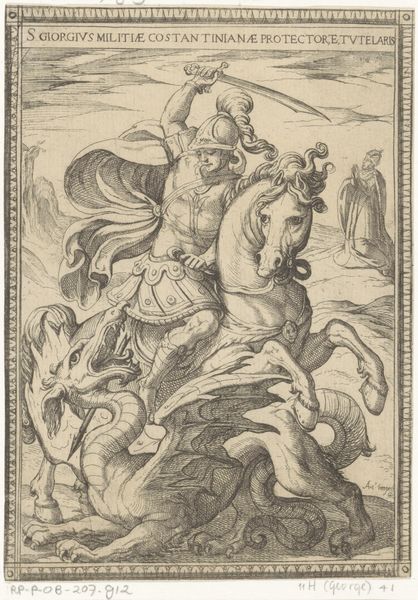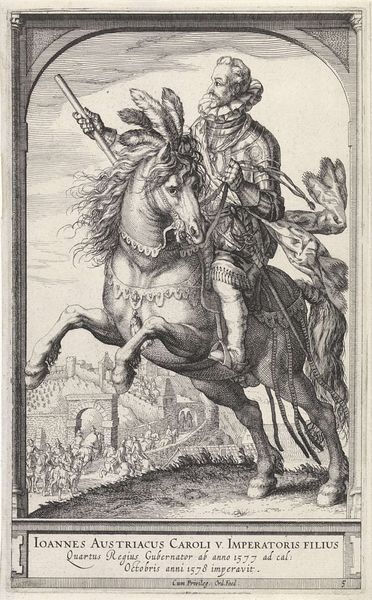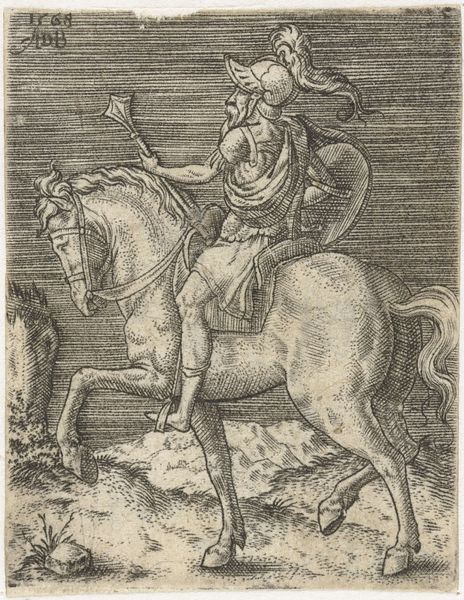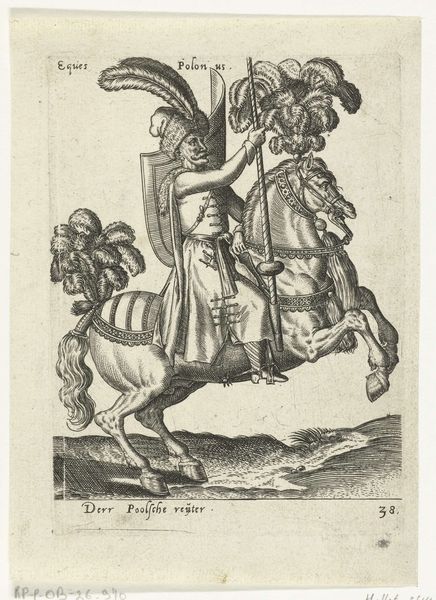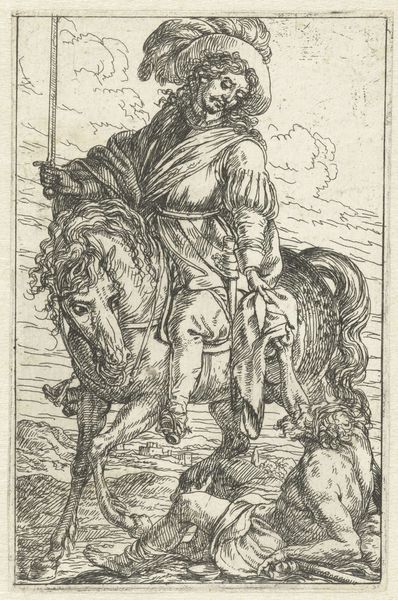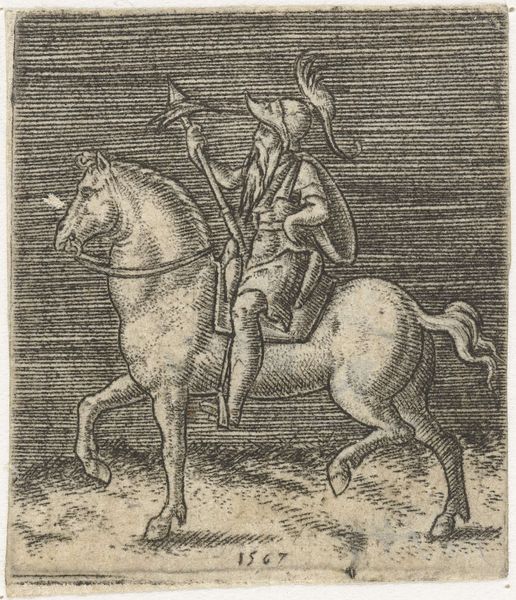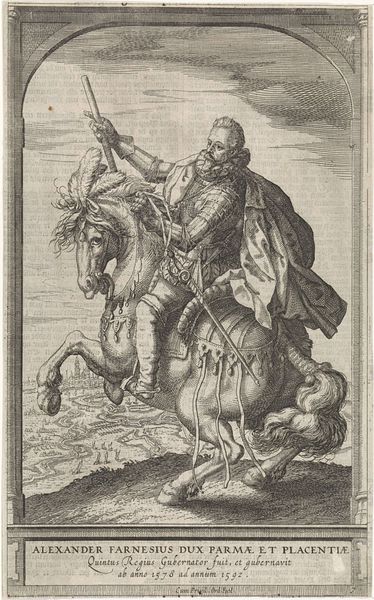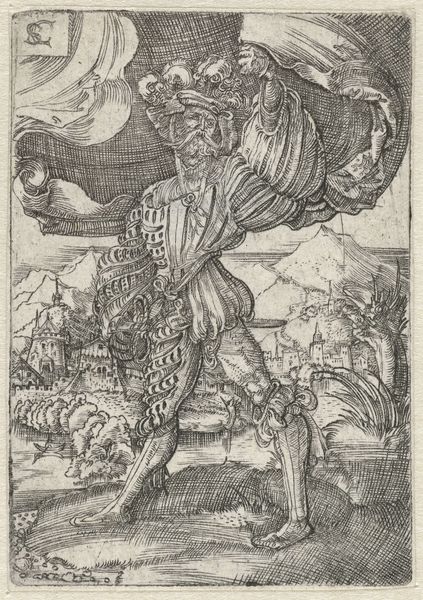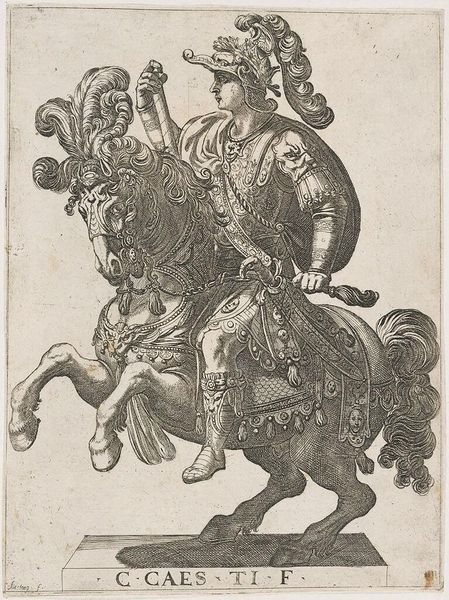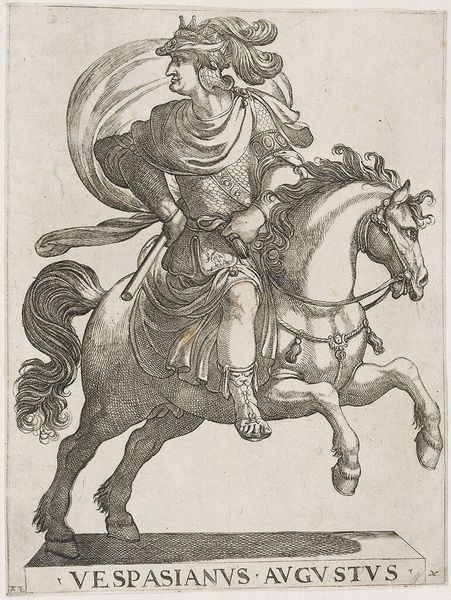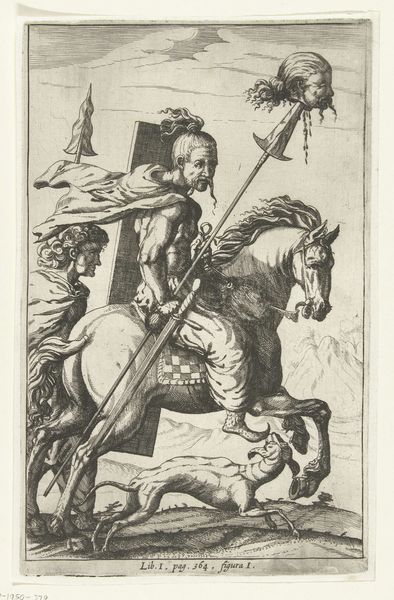
print, engraving
#
portrait
#
baroque
# print
#
figuration
#
line
#
history-painting
#
engraving
Dimensions: height 276 mm, width 202 mm, height 23 mm, width 202 mm
Copyright: Rijks Museum: Open Domain
Curator: Here we have Pieter Feddes van Harlingen’s “Equestrian Portrait of Willem Lodewijk,” likely created sometime between 1611 and 1623. It’s an engraving, a print. Editor: It’s really quite stark, isn't it? The texture of the lines against the blank space… and the sheer weight of the subject. He's heavy, armored, and elevated over a landscape with some dramatic waves or clouds at the horizon. I suppose it makes a grand statement. Curator: Grand indeed! Willem Lodewijk was stadtholder of Friesland, Groningen and Drenthe. Equestrian portraits in general served a powerful symbolic function, associating the ruler with martial prowess and authority. And then the inclusion of his coat of arms asserts family lineage as well as virtue, you know. Editor: Certainly, but it's the *way* it's been manufactured that grabs me. An engraving means meticulous, painstaking labor. Someone physically cut into the plate to make this image reproducible, thereby amplifying its reach throughout society. It really underscores the intention behind projecting this powerful image of Lodewijk. It's not about beauty here, it's about effective distribution. Curator: Good point. Think about how printmaking also made portraits more widely accessible than painted images would have been. The message—the symbolism of leadership—becomes accessible to a much larger audience. Editor: And I can imagine a craftsman needing to access various symbolic guides, templates, maybe from across Europe. How that circulation of image and text speaks to knowledge production, artistic economies... Curator: He certainly looks quite confident sitting upon his horse with the sword. It really projects an aura of invincibility. The image seems designed to elicit a certain emotional response, I suspect—of allegiance and security—through readily understood iconographic elements. Editor: And because the plate can be reworked again and again, as trends evolve the message could also morph subtly... An older tool with a future-facing potential. The line itself as material. I keep being drawn back to this medium and the means to shape collective narratives. Curator: Yes, tracing those shifting meanings can give insight into a specific audience that sees a hero reflected in this image. Editor: Exactly. And for us today? Thinking through production, value, symbols, power... all interwoven by labor. Curator: Food for thought. Thank you.
Comments
No comments
Be the first to comment and join the conversation on the ultimate creative platform.
